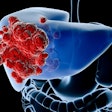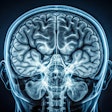On October 1, 2006, there were 234 new International Classification of Diseases, 9th Revision, Clinical Modification (ICD-9-CM) diagnosis codes, 29 invalid codes, and more than 100 revised code descriptions that became effective. The HIPAA Transaction and Code Set Rule requires the use of national/medical code sets that are valid at the time that the service is provided, and ICD-9-CM is a national/medical code set. As there is no longer a 90-day grace period after implementation of an updated medical code set, ICD-9-CM codes submitted on claims must be valid at the time the service is provided.
The changes, which are spread all over the book, reflect recognition of more detailed information about certain disease processes. What better way to capture these changes -- either for monitoring patients' conditions or for statistical purposes -- than to make a ritual every fall to learn, share, or implement these changes. For most of us, it is time to buy new books, update the superbills, and educate the physicians.
Highlights
Presented below are the highlights of a few notable changes, and the rationale behind them wherever possible. For all changes refer to the Web sites for the Centers for Disease Control and Prevention (CDC)/National Center for Health Statistics (NCHS), or Centers for Medicare and Medicaid Services (CMS) and the latest edition of the ICD-9-CM 2007 book.
Infectious disease
Under the infectious diseases category, there are three new codes -- 052.2, 053.14, and 054.74 -- to further differentiate different forms of myelitis inflammation of the spinal cord. Postvaricella myelitis is a neurological complication of chickenpox. Herpes zoster myelitis is also a complication of chicken pox in patients who are immunocompromised. The dormant virus becomes active and causes localized eruptions of shingles (zoster) producing neurological consequences. Herpes simplex viruses are strains of human herpes virus affecting the central nervous system (CNS).
Neoplasm
Under the neoplasm category we have a few exclusions under neoplasm of gastrointestinal (GI) tract: 151, 152, 171, 211, 215.5, and 235.
Stromal tumors have been excluded from these categories. Initially thought to start in muscle layer or nerve because of their resemblance to them, they are now classifiable under more specific cell types. Submucosal gastrointestinal tumors (GIST) start in cells of the gastrointestinal tract called the interstitial cells of Cajal (ICC), which is part of the autonomic nervous system (ANS), and sends signals to the GI tract for uncontrolled growth of these tumor cells. GIST have a different prognosis, and doctors need to know the diagnosis for better treatment purposes.
The addition of a fifth digit under subcategory 238.7 (neoplasm of uncertain behavior of other and unspecified sites and tissues) reflects more specificity regarding myelodysplastic syndrome and certain myeloproliferative disorders:
- 238.71 Essential thrombocythemia. There is increased production of platelets by bone marrow, making normal clotting difficult.
- 238.72 Low-grade myelodysplastic syndrome (refractory anemia). A bone marrow disorder interfering with red blood cell (RBC) production and abnormal development
- 237.73 High-grade myelodysplastic syndrome
- 237.74 Myelodysplastic syndrome with 5q deletion; has a loss of #5 part in chromosome, resulting in abnormal RBC production
- 237.76 myelofibrosis with myeloid metaplasia
- 238.79 Other lymphatic and hematopoetic tissues
- (RAEB-1 with excess blasts-1; 5%-9% blasts in bone marrow, 0%-4% in blood)
(RAEB-2 with excess blasts-2; 10%-19% blasts in bone marrow, 5%-19% in blood)
Amyloidesis code 277.3 now has fifth digits 0, 1, and 9 to distinguish and report familial Mediterranean fever (FMF) an inflammatory disorder once known in a specific community but now affecting a more diverse heritage.
Blood
There are quite a few expansions under diseases of the blood and blood-forming organs. Notable among them are the addition of a fifth-digit subcategory to 284.0 (constitutional aplastic anemia) as 284.01 and 284.09, as well as an addition of pancytopenia 284.1 and 284.2 for myelophthisis. Myelophthisis is a form of bone marrow failure that results from the destruction of bone marrow precursor cells and their stroma, which nurture these cells to maturation and differentiation. The underlying causes include, but are not limited to, metastatic carcinomas, lymphoma, and Gaucher disease.
Description of code 288.0 changed from agranulocytosis to neutropenia, and it expanded to fourth and fifth digits to accommodate different kinds of neutropenia. Neutropenia is a condition where there is a decreased neutrophil count in blood, resulting in higher susceptibility to bacterial and fungal infections. Splenic neutropenia was put under a new subcategory under 289.53, and secondary myelofibrosis is now reported with code 289.83.
CNS
Diseases of the nervous system and sense organs (320-389) also saw changes this year, with specific reference to the 323 category for encephalitis, myelitis, and encephalomyelitis. The changes include expansion of subcategories 323.0, 323.4, 323.5, 323.6, 323.7, and 323.8. The changes now describe encephalitis, myelitis, and encephalomyelitis following immunization or infections and toxic myelitis, encephalitis, and encephalomyelitis (Acute and idiopathic-transverse myelitis are addressed by new codes under category 341. Transverse indicates dysfunction at a specific level of spinal cord and related abnormal functions below this level).
Cognitive impairment
To reflect and differentiate certain age-related versus mild cognitive impairment, so stated, we have a new code, 331.83. Mild cognitive impairment, also called age-associated memory impairment (AAMI), is a subtle but measurable memory disorder. The person has memory problems greater than normally expected with aging, but does not show other signs of dementia or impaired judgment or reasoning. Doctors are still working to understand mild cognitive impairment and its relationship to Alzheimer's disease. In 2001 the American Association of Neurology published guidelines for early detection of memory problems, identified many criteria, and came up with key questions.
This is an improvement over 780.93, "Memory loss," because it allows for coding cognitive impairment other than memory impairment. Along those same lines, code 780.97 has been added for reporting altered mental status.
There are new codes for acquired acute dystonia due to drugs (333.72) and subacute dyskinesia due to drugs (333.85). In related news, restless leg syndrome, a commonly misdiagnosed neurological movement disorder, is given a new code, 333.94. More than 10 million people in the U.S. suffer from this, and patients report having unpleasant leg sensations like burning, creeping, tugging, or insect creeping, which causes an uncontrollable urge to move the legs (restlessness). Changes in lifestyle, taking supplements, hot baths, and massages may help. In 2005, ropinirole became the only drug approved by the U.S. Food and Drug Administration for these symptoms.
Pain codes
For most of us, new codes for pain drew our attention. The new category 338, as well as new subcategories and subclassifications, will help us to capture specific underlying causes of pain, as well as its acute or chronic nature.
Category 338 excludes generalized pain (780.96), localized pain, and pain disorder due to psychological factors (307.80). The subcategories are further classified as central pain syndrome (338.0), acute pain (338.1), chronic pain (338.2), neoplasm-related pain (338.3), and chronic pain syndrome (338.4). It is important to understand the definition of acute versus chronic pain in order for coders to select the correct code.
Acute pain is defined as pain lasting less than three to six months, or pain that is directly related to tissue damage. This is the kind of pain that is experienced from a paper cut or needle prick. Other examples of acute pain include injury, touching a hot source, crushing injury, and labor pains.
The longer pain goes on, the more susceptible it is to other influences and developing into a chronic pain problem. These influences include such things as the ongoing pain signal input to the nervous system without tissue damage, lack of exercise (physical deconditioning), a person's thoughts about the pain, as well as emotional states such as depression and anxiety.
Chronic pain is generally used to describe pain that lasts more than three to six months, or beyond the point of tissue healing. Chronic pain is usually less directly related to identifiable tissue damage and structural problems. Examples of chronic pain are chronic back pain without a clearly determined cause, failed back surgery syndrome (continued pain after the surgery has completed healed), and fibromyalgia.
There are few changes in eye and ear chapters. See codes 377.43, 379.60-379.63, 389.15, and 389.16.
Broken heart syndrome, 429.83, also known as Takotsubo syndrome, is a stress-induced cardiomyopathic disorder found more in women. There has been a recent increase in its occurrence in female population.
Nasal mucositis characterized by pain, inflammation, irritation, and decreased sense of smell is now categorized as 478.11. It can be caused by chemotherapy, immune system suppression, localized cancer, and post radiation.
According to the FDA's Center for Biologics Evaluation and Research, transfusion-related acute lung injury (TRALI), though uncommon, is a serious pulmonary complication of blood transfusion. A new code, 518.7, was created to identify and code this complication.
Other new codes
Code 519.11 (acute bronchospasm) was added to other diseases of the respiratory system to diagnose those young patients who present with bronchospasm, and in whom asthma has not been identified or they do not fit the clinical picture of bronchitis.
For conditions such as respiratory problems, endocrine, and metabolism disturbances and cardiac arrest of fetus or newborn (originating in the perinatal period), new codes were added under the 770, 775, and 779 categories of chapter 15.
Miscellaneous
There are almost 33 new codes under diseases of hard tissues of teeth, acute and chronic periodontal diseases, dental restoration, stomatitis, and mucositis.
There are 13 new codes in chapter 16 under symptoms, signs, and ill-defined conditions.
These codes include complex febrile seizure (780.32); generalized pain (780.96) as a default, nonspecific code; postnasal drip (784.91) with unknown etiology; urinary symptoms (788.64, 788.65); and altered mental status (780.97) as an indication of an onset or progression of an underlying disease.
Also look out for inclusion and exclusion codes under 793.81 -- mammographic calcification. And new codes under 793.9, especially 793.91 for an inconclusive image test due to excess fat.
Genitourinary
Code 682.2, torsion of testis, was expanded to fifth-digit subclassification to include specific anatomical sites. Testicular torsion is a common urological emergency in pediatric patients.
Two new codes were added under 616.8 -- other specified inflammatory diseases of cervix, vagina, and vulva; and mucositis was given a specific code 616.81.
As continuity to codes for female genital mutilation (FGM) status, a specific code for level IV status is provided. 629.29 now includes mutilation due to cutting, burning, tearing, stretching, or using corrosive materials.
To collect data for encounters for testing of a patient who is a habitual aborter (loss of three of more pregnancies), but not currently pregnant, code 629.81 was created. It has an exclusion note to state that habitual aborter with current pregnancy be coded as 646.3X.
Under complications of pregnancy, childbirth, and puerperium, a new category 649 was created to include current conditions complicating pregnancy. It includes complications due to smoking, obesity, bariatric surgery, coagulation defects, epilepsy, and spotting.
Uterine size date discrepancy has also been moved from the 646.8 subcategory to the 649.6 subcategory.
A new code, 795.06, was created for a diagnostic Pap smear of the cervix with cytological evidence of malignancy. This will enable more specific coding and reporting of visits associated with positive findings in a Pap smear. In the same category we have a new code, 795.8, for abnormal tumor markers and its subclassification as elevated CEA or CA 125. CEA measures the amount of protein that may appear in blood of some people who have cancer. CA 125 in blood reflects tumor changes in the surface of many ovarian cells. The measurement can be used to monitor treatment or recurrence of tumors.
Musculoskeletal
Under diseases of the musculoskeletal system and connective tissue, codes for nontraumatic compartment syndrome have been added. As compared with new traumatic compartment syndromes codes (958.9X), this new code, 729.7, and its subclassification now includes specific anatomical sites and identifies their underlying causes, such as exertion, seizures, nephritic syndrome, and so on.
A few changes in V codes are also noteworthy, such as: V15.81 for family history of colonic polyps; V45.86 for bariatric surgery status; V58.30-encounter for change or removal of nonsurgical wound dressing; V58.31 for surgical wound dressing; and V58.32 for removal of sutures. In addition, V86.0 for estrogen receptor-positive status (ER+) and V86.1 (ER-) have also been included on the list of V codes. These codes indicate that you have had to first code a malignant neoplasm of the breast.
Do not forget to look at the revised codes also in your new ICD-9-CM 2007 book and to refer to the NCHS Web site for additional guidance.
By Deepa MalhotraAuntMinnie.com contributing writer
January 2, 2007
Deepa Malhotra is president of Chicago-based Healthcare Educational Resource Services (HERS), a radiology business, auditing, coding, education, certification, and denial-management consulting group. The firm can be contacted at (630) 236-4212, (630) 272-4720, or via its Web site.
Related Reading
Increase image reimbursement with a designated coder, August 7, 2006
Cardiac imaging: The battle for reimbursement, August 6, 2006
Prevent IR coding whirlwind with basics, July 26, 2006
Take care when coding for digital mammography and CAD, July 13, 2006
Coding for the back shouldn't be a pain, November 8, 2005
Copyright © 2007 Health Care Educational Resource Services



















